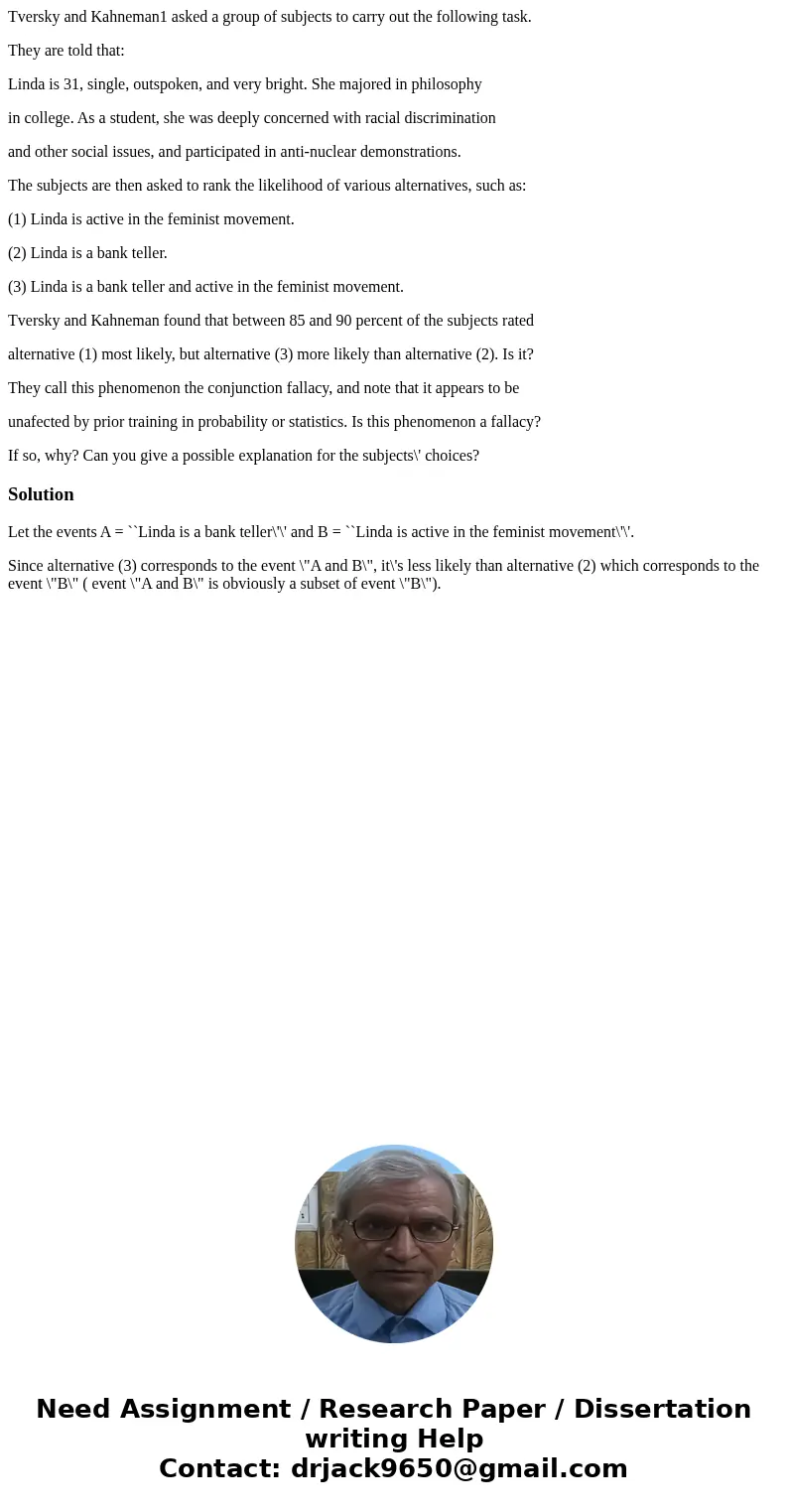Tversky and Kahneman1 asked a group of subjects to carry out
Tversky and Kahneman1 asked a group of subjects to carry out the following task.
They are told that:
Linda is 31, single, outspoken, and very bright. She majored in philosophy
in college. As a student, she was deeply concerned with racial discrimination
and other social issues, and participated in anti-nuclear demonstrations.
The subjects are then asked to rank the likelihood of various alternatives, such as:
(1) Linda is active in the feminist movement.
(2) Linda is a bank teller.
(3) Linda is a bank teller and active in the feminist movement.
Tversky and Kahneman found that between 85 and 90 percent of the subjects rated
alternative (1) most likely, but alternative (3) more likely than alternative (2). Is it?
They call this phenomenon the conjunction fallacy, and note that it appears to be
unafected by prior training in probability or statistics. Is this phenomenon a fallacy?
If so, why? Can you give a possible explanation for the subjects\' choices?
Solution
Let the events A = ``Linda is a bank teller\'\' and B = ``Linda is active in the feminist movement\'\'.
Since alternative (3) corresponds to the event \"A and B\", it\'s less likely than alternative (2) which corresponds to the event \"B\" ( event \"A and B\" is obviously a subset of event \"B\").

 Homework Sourse
Homework Sourse